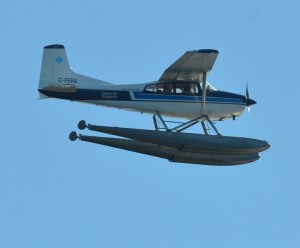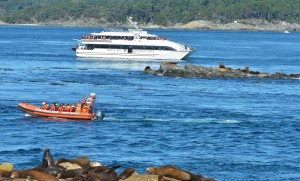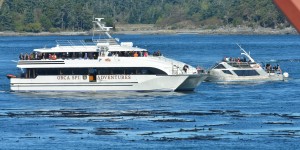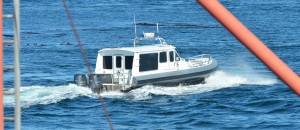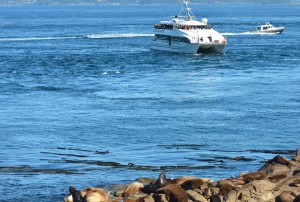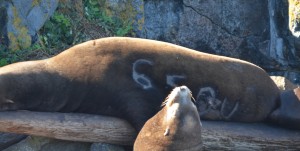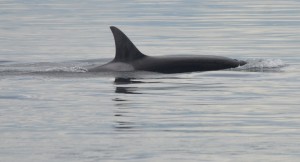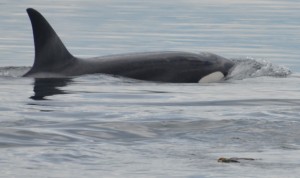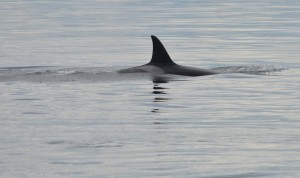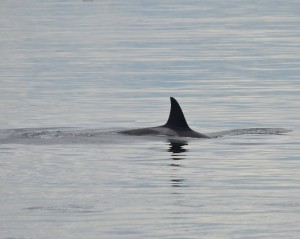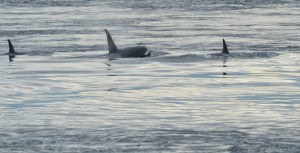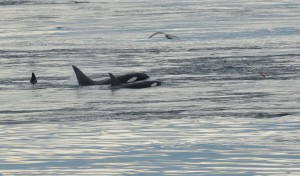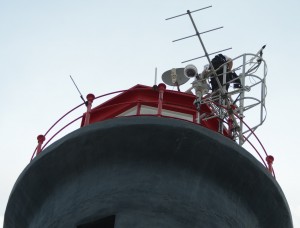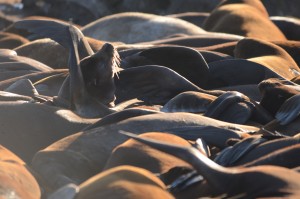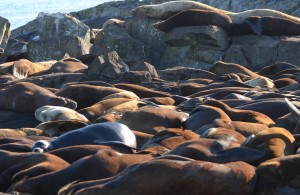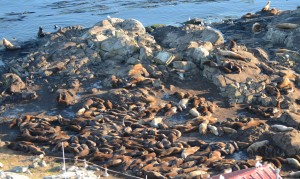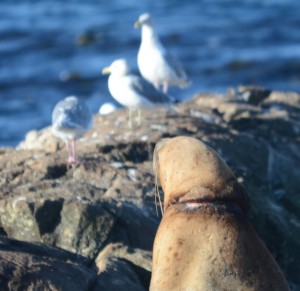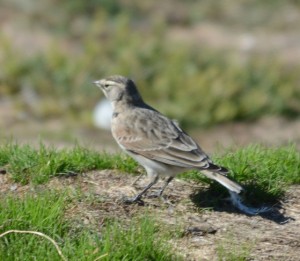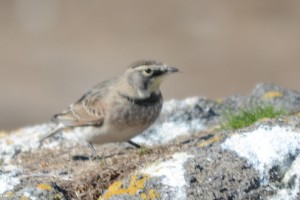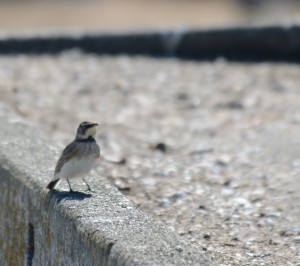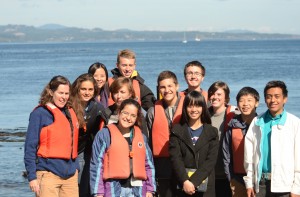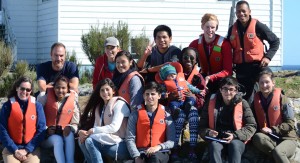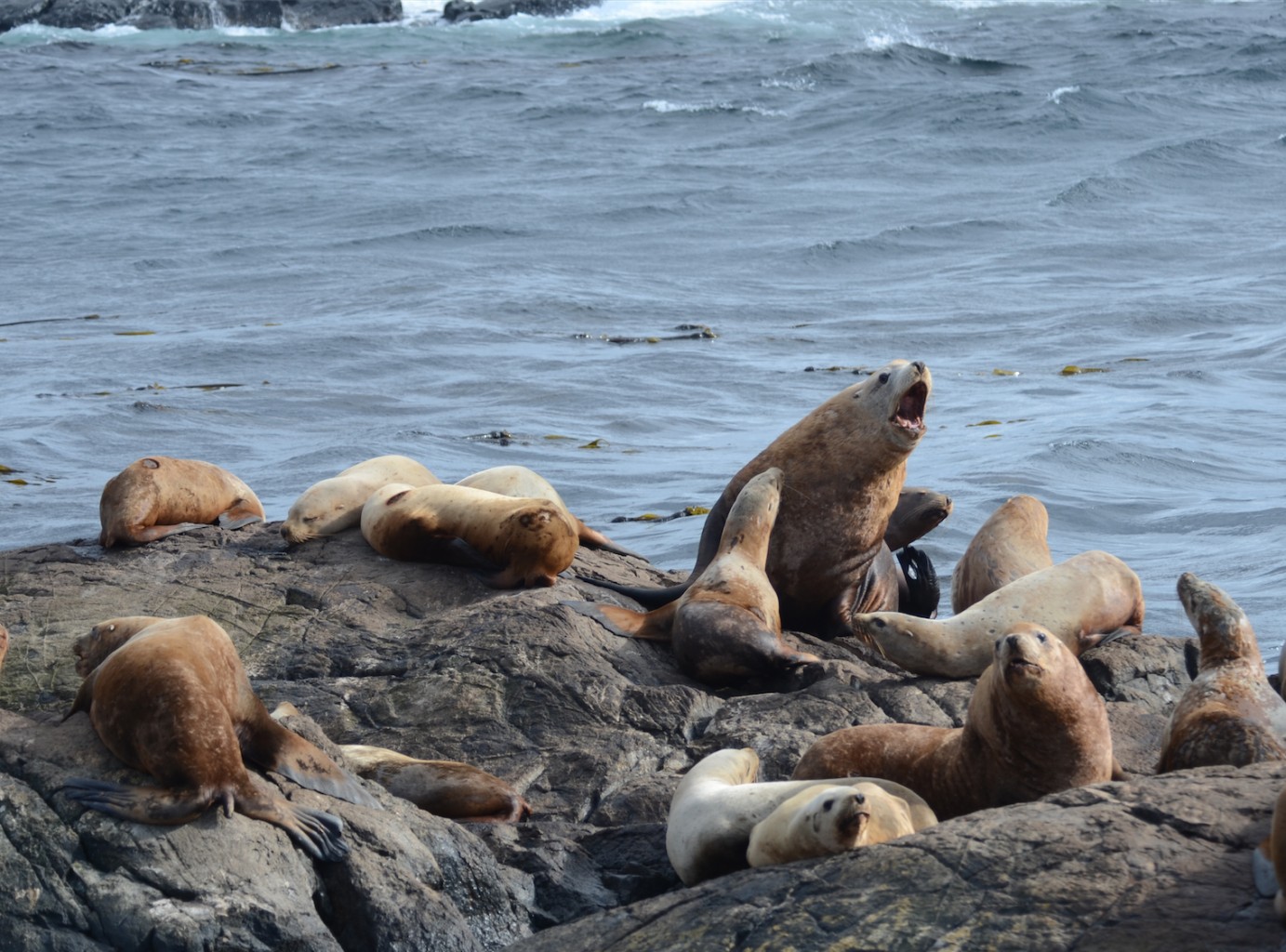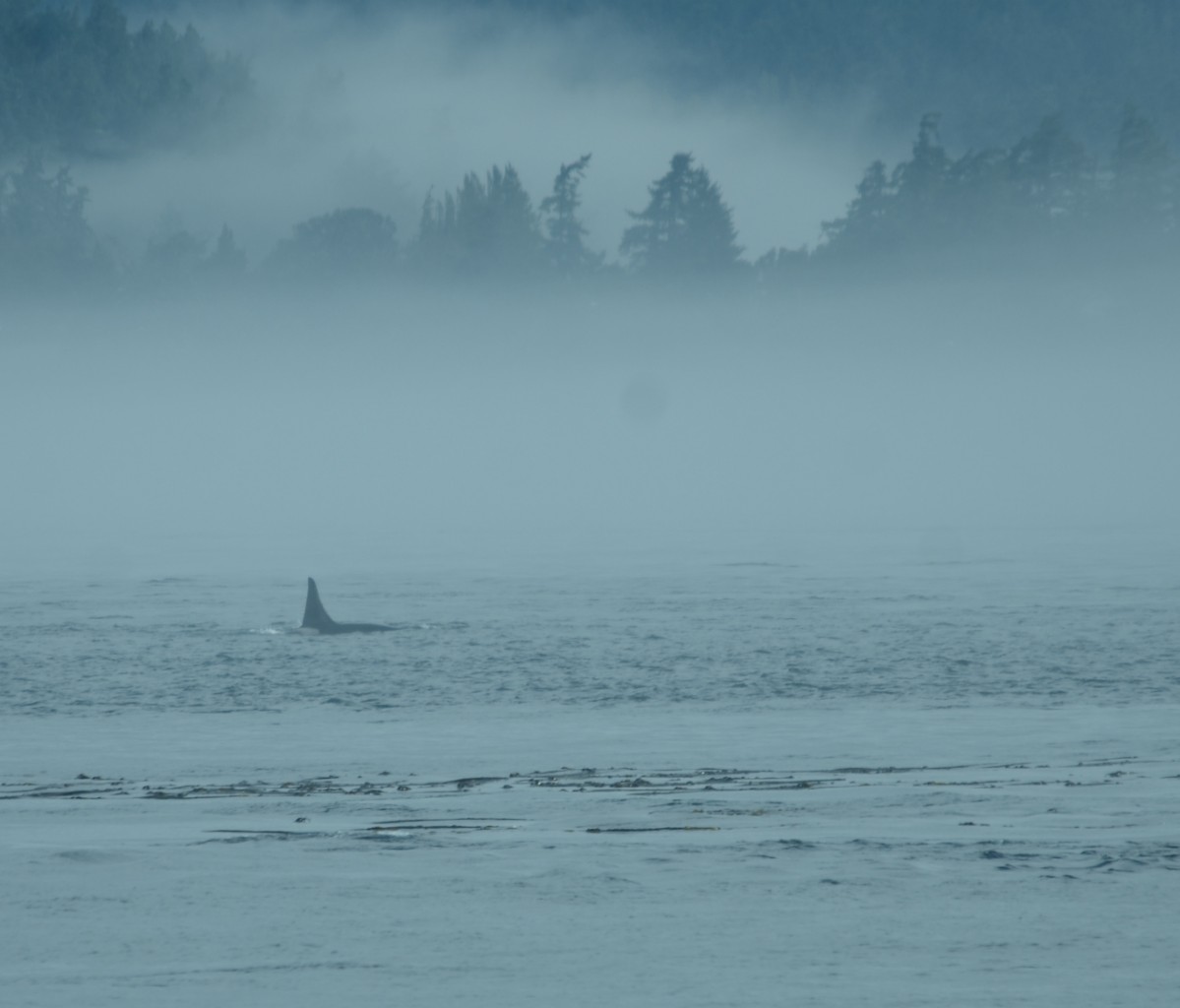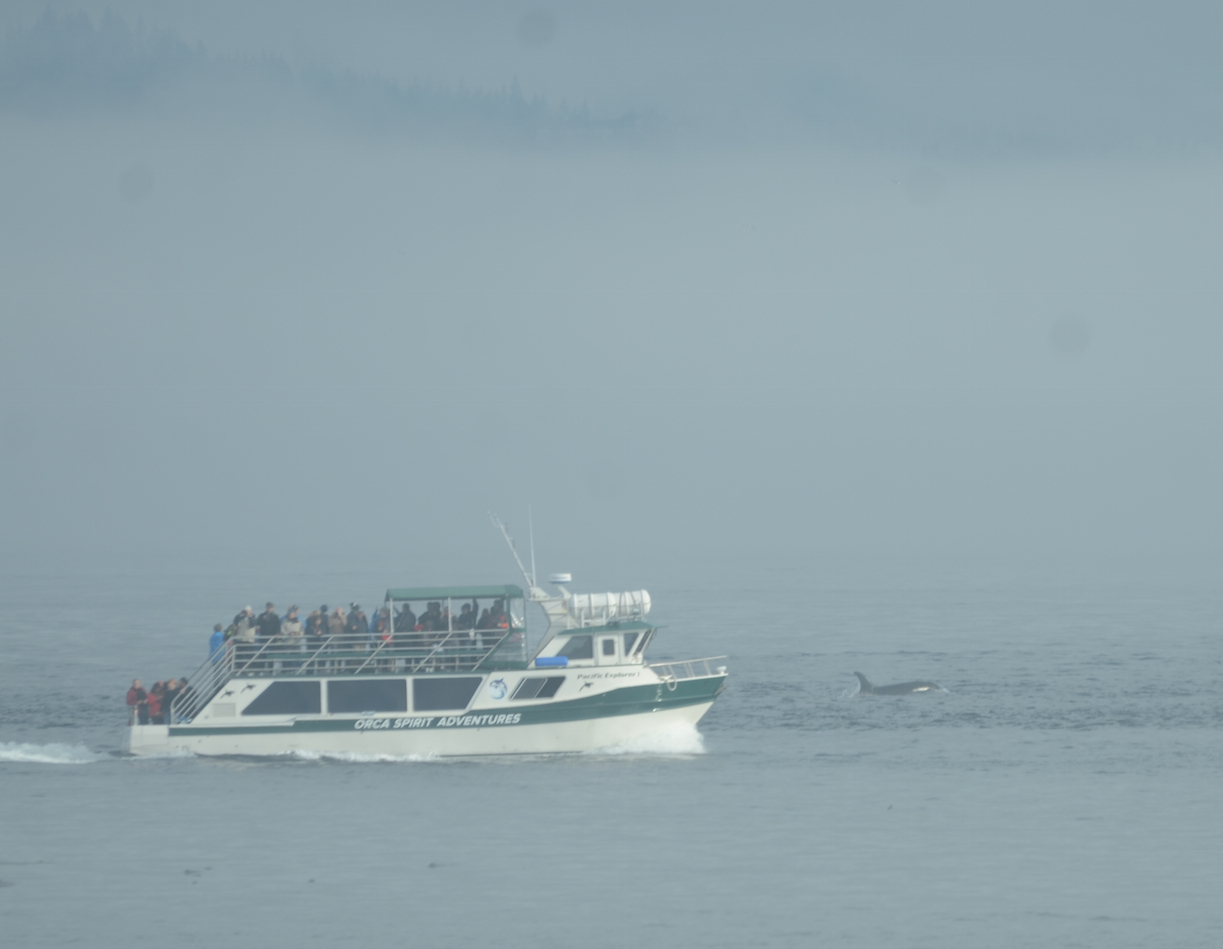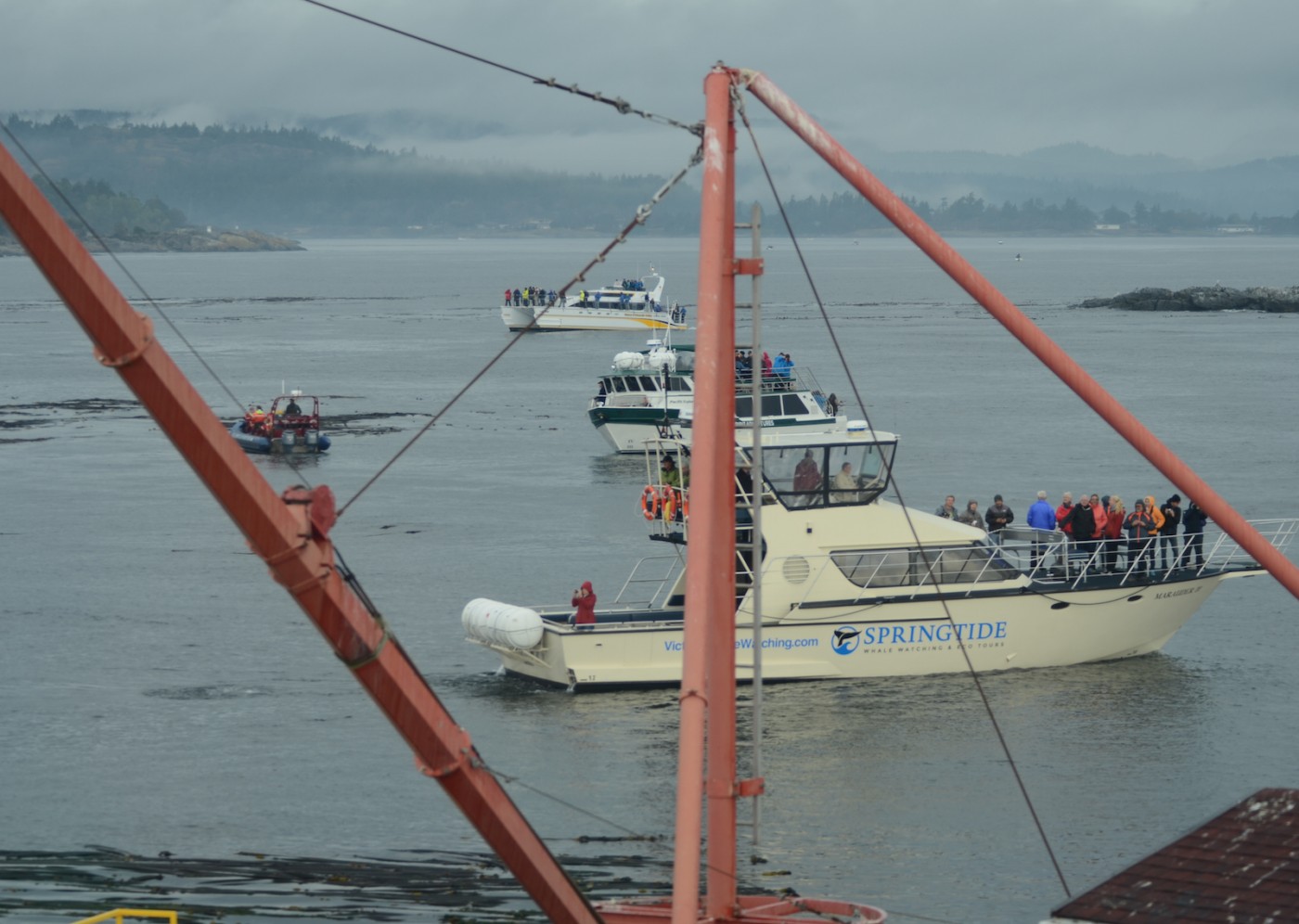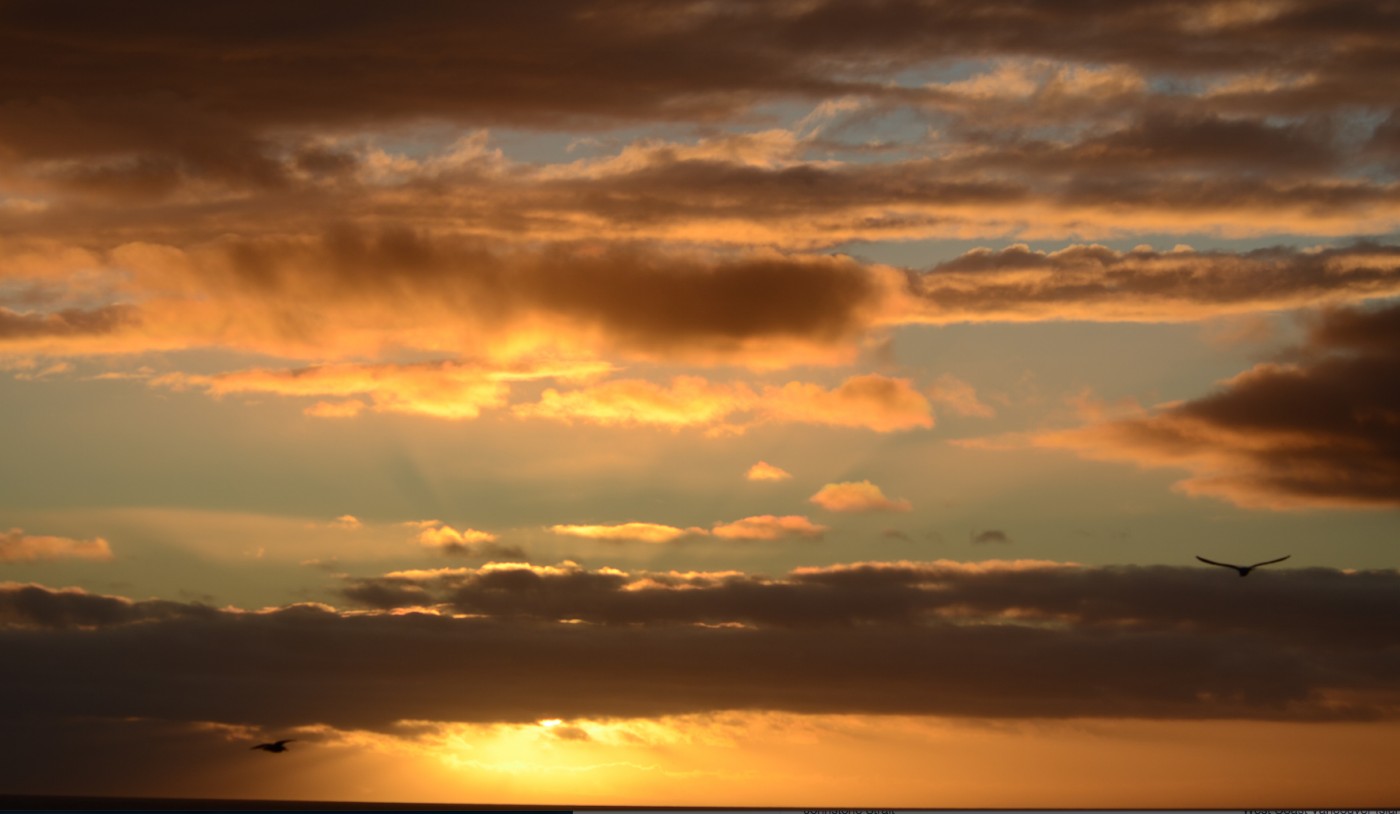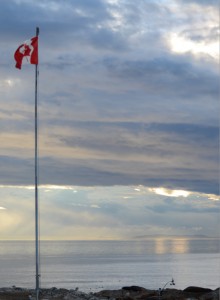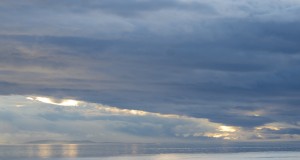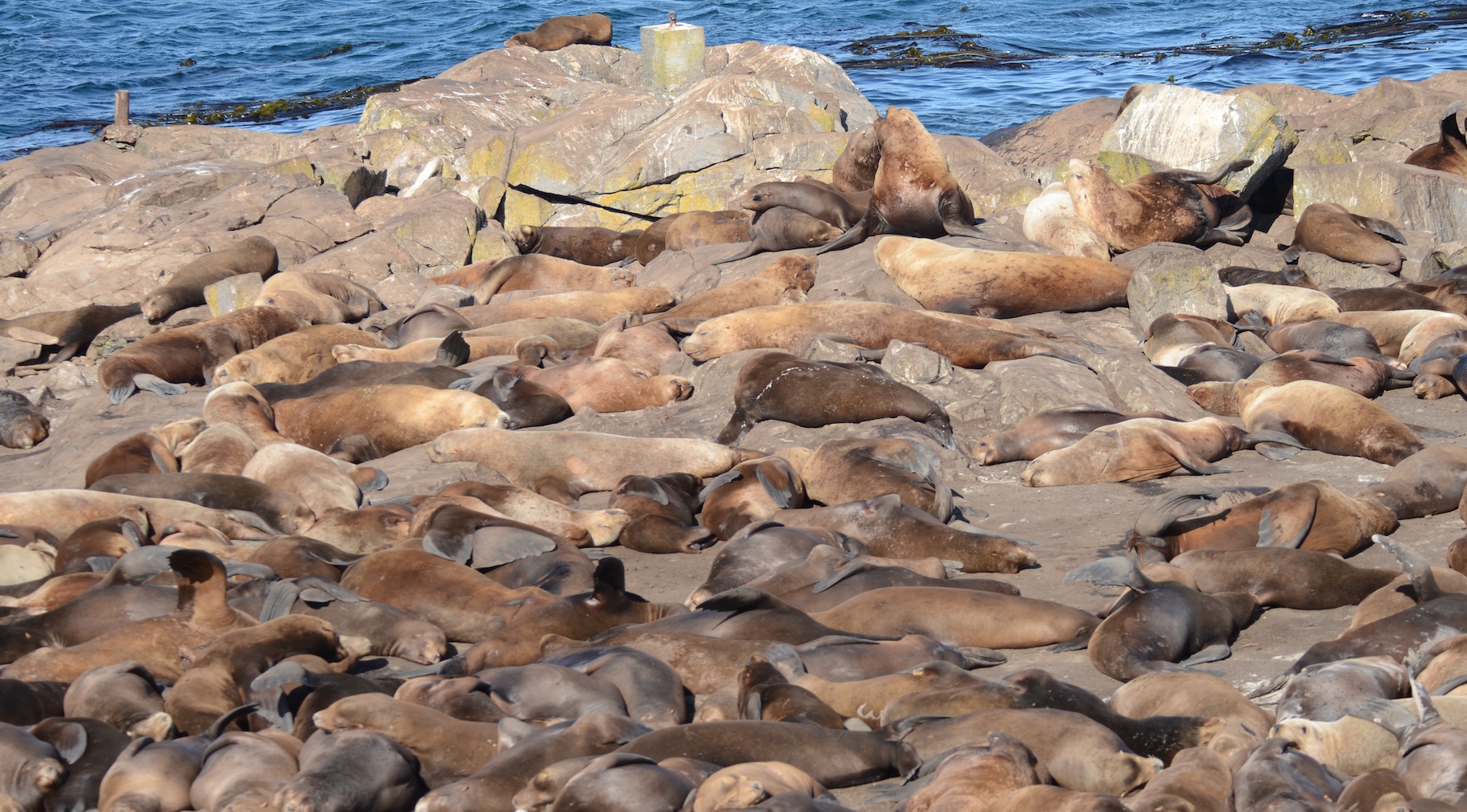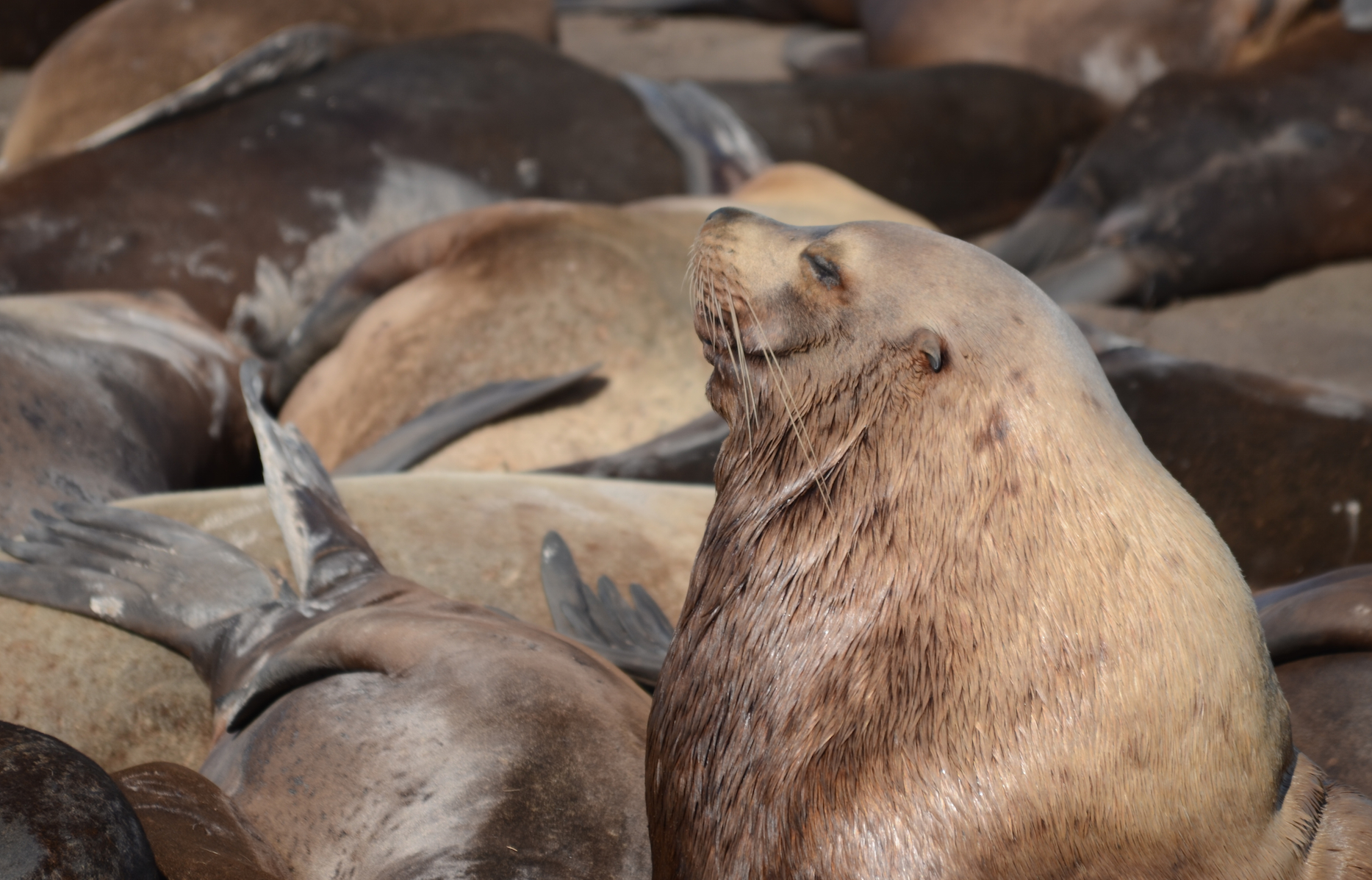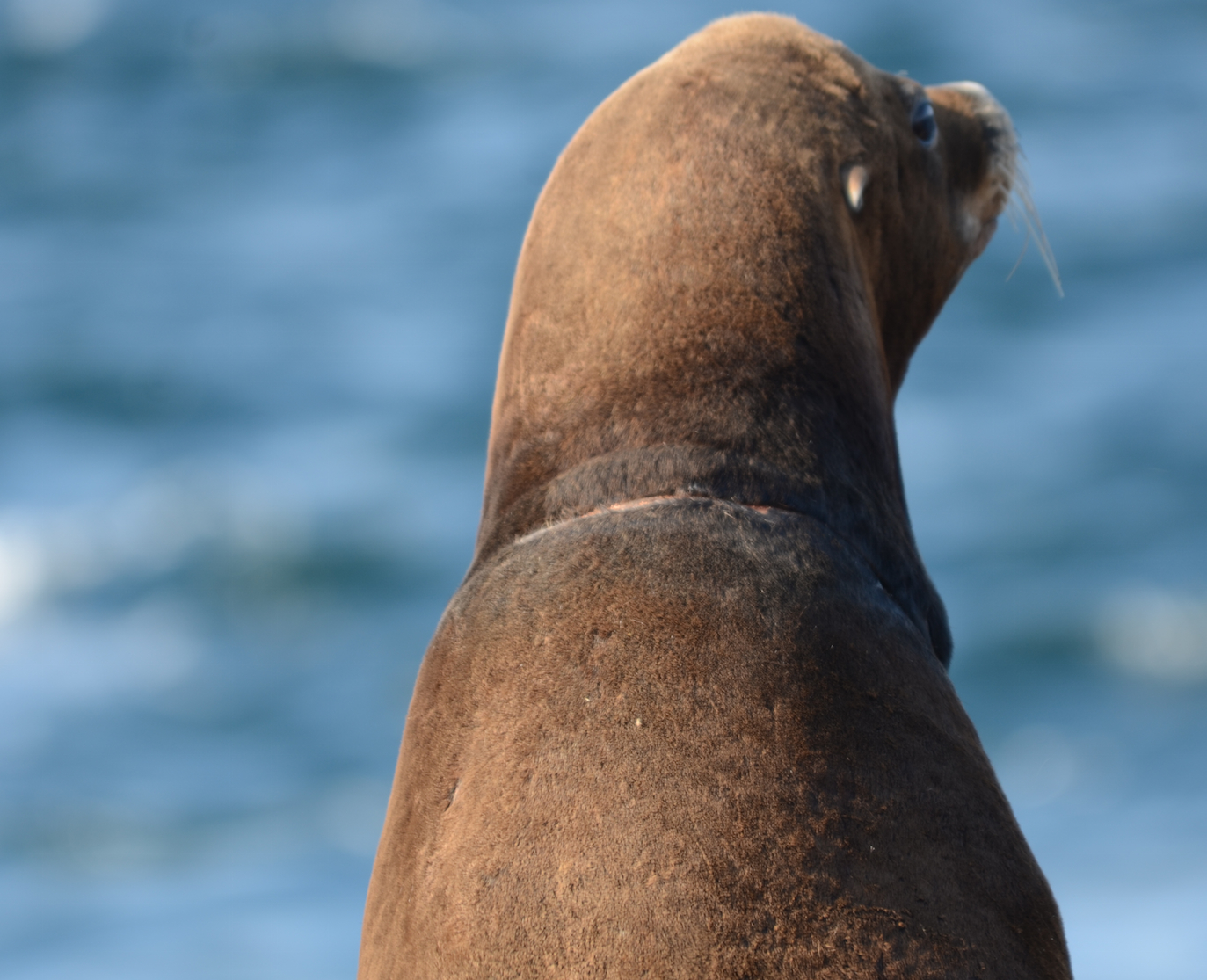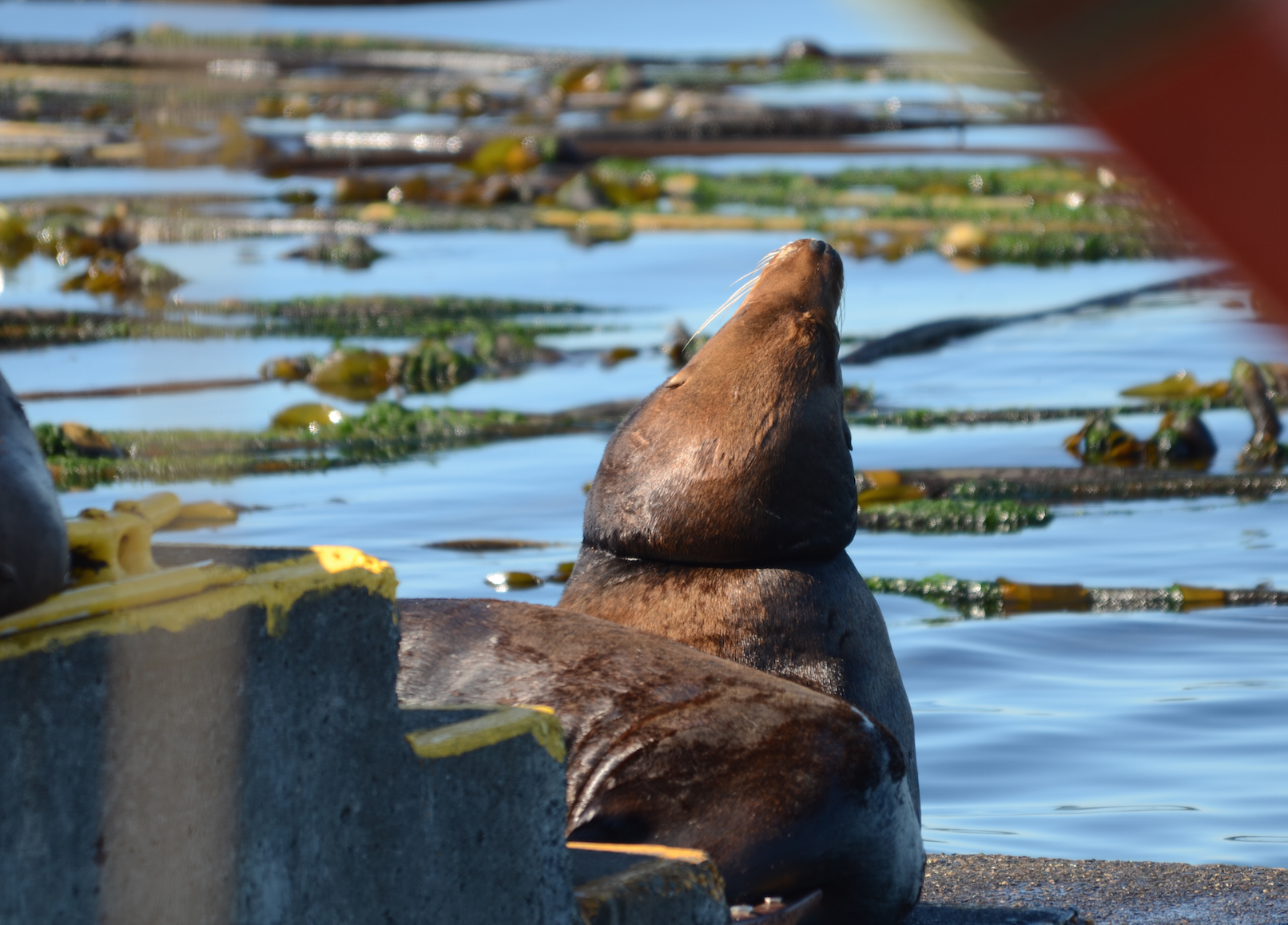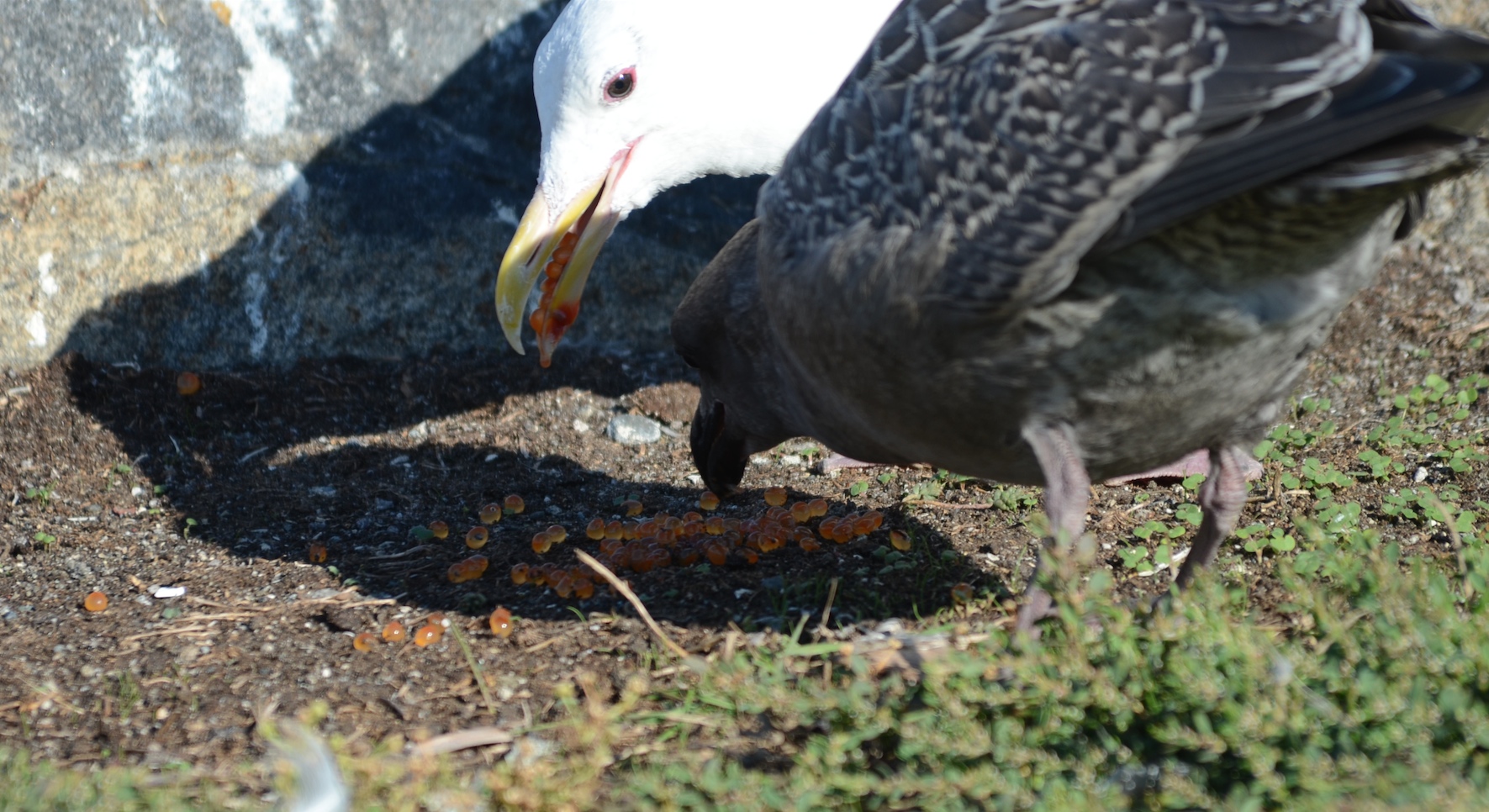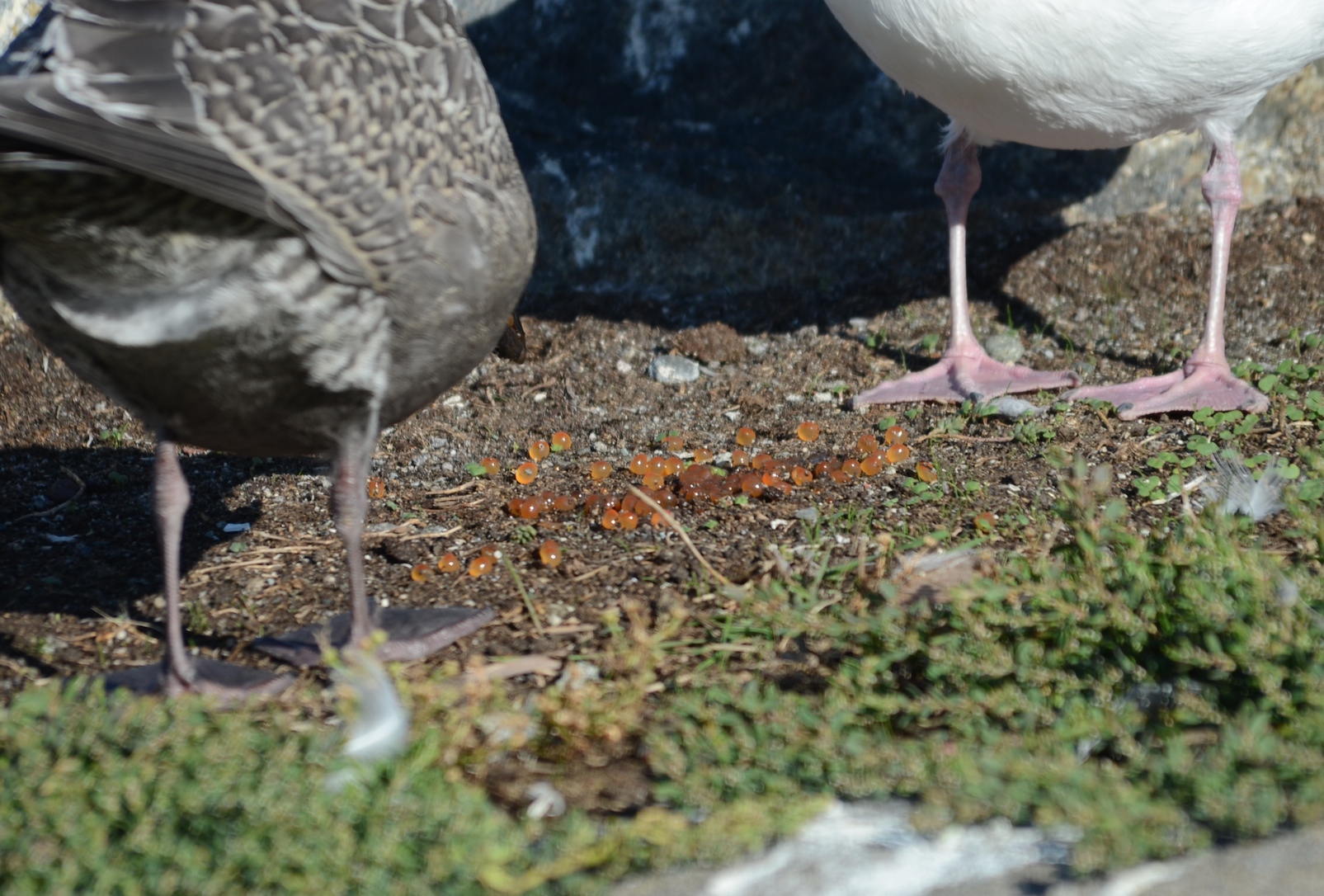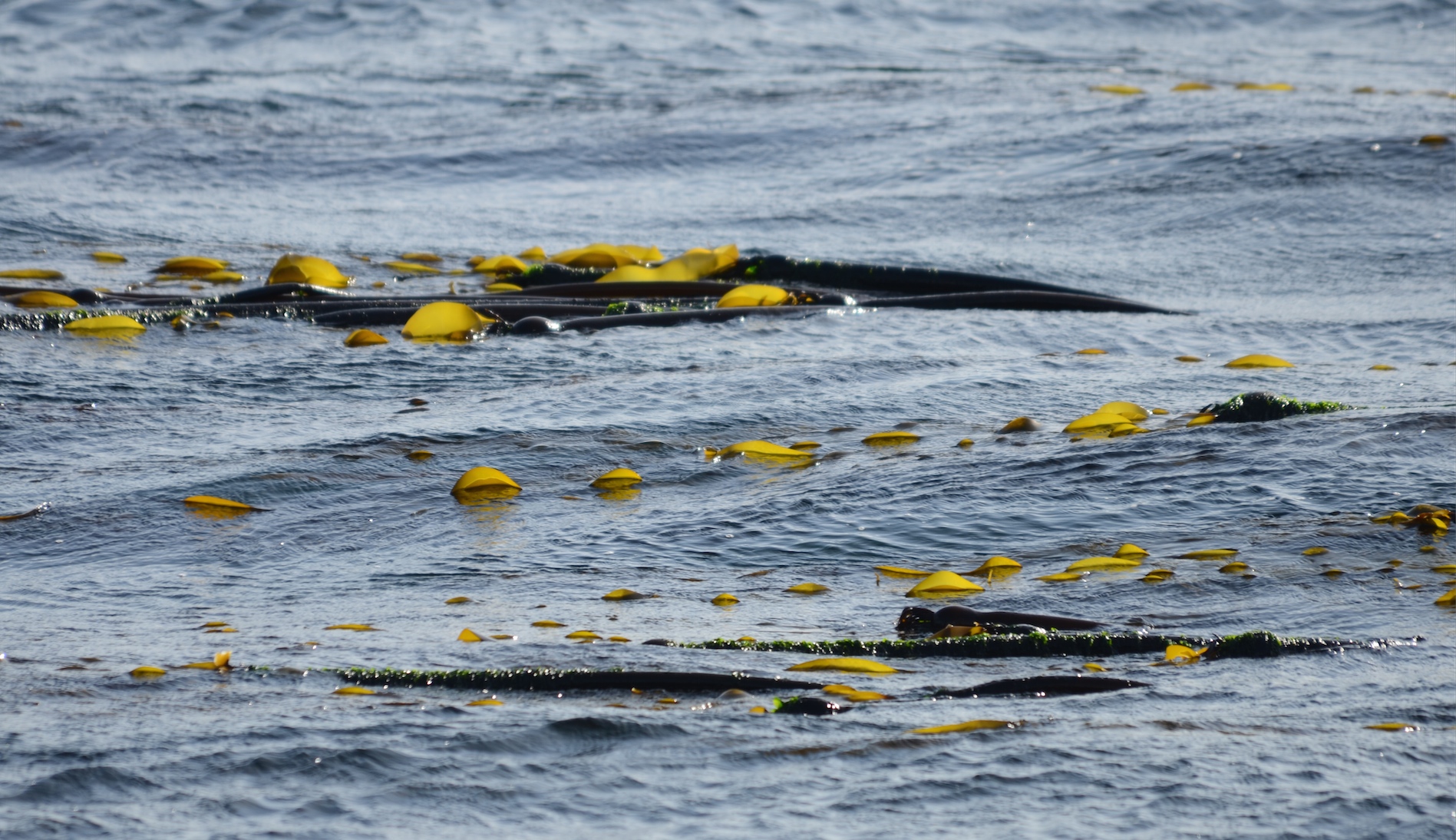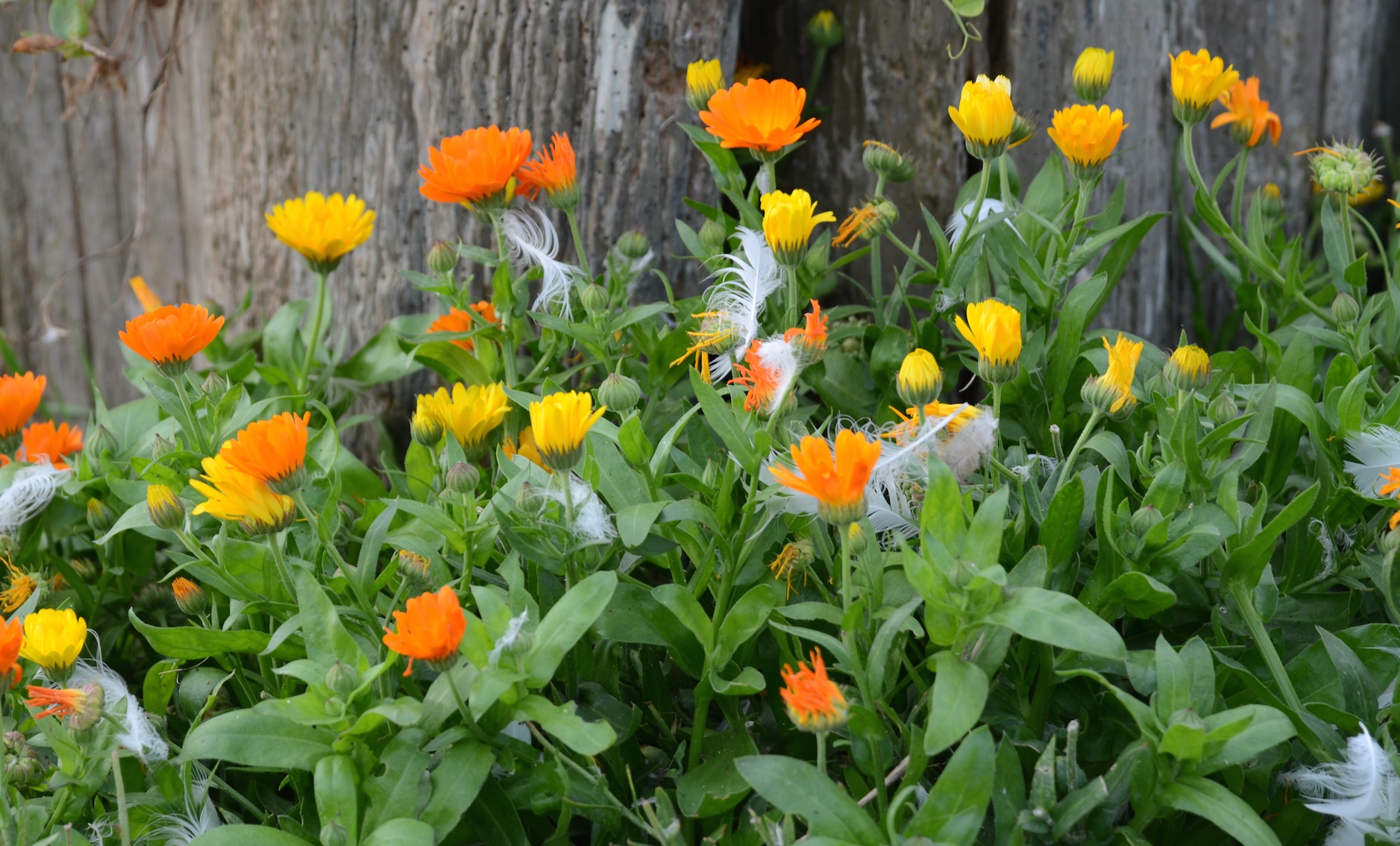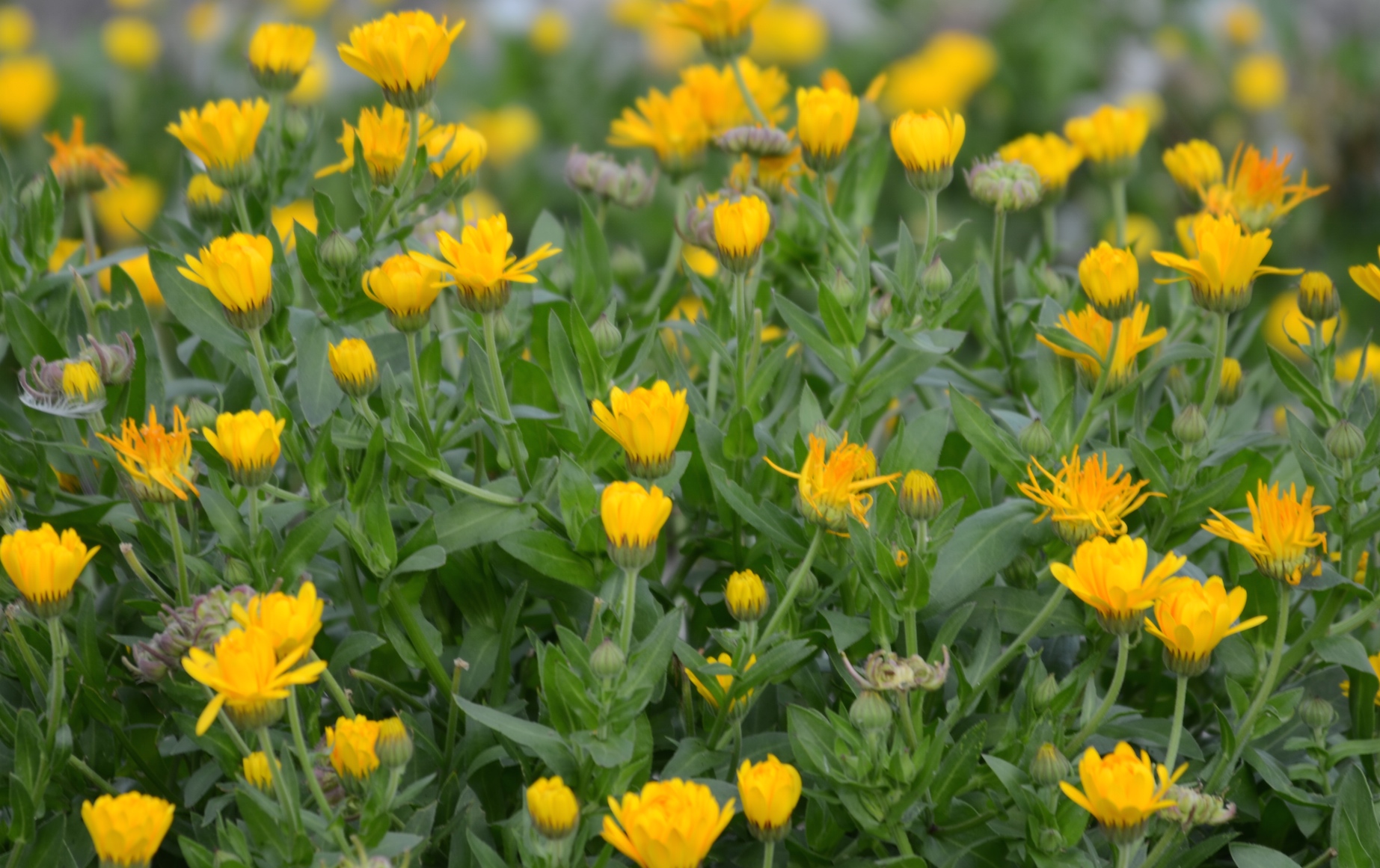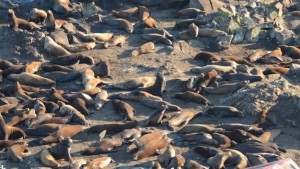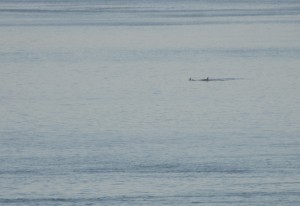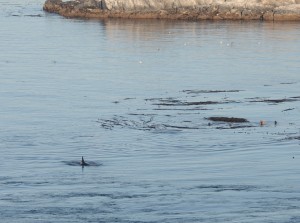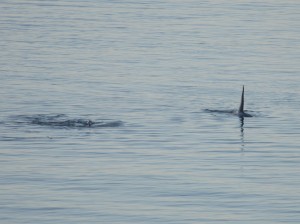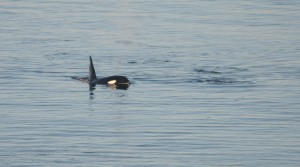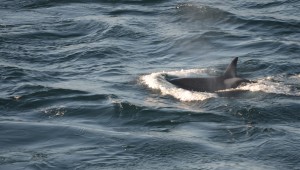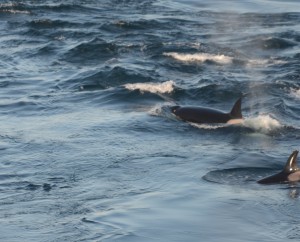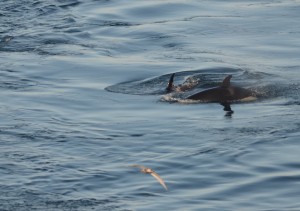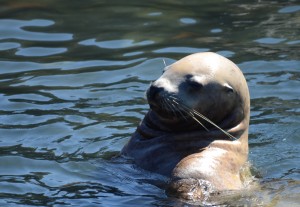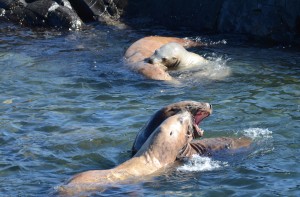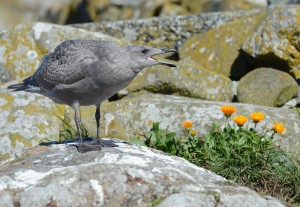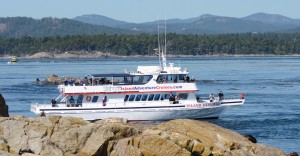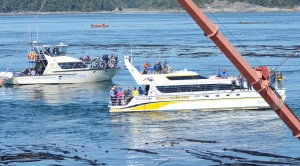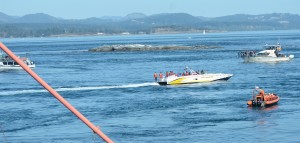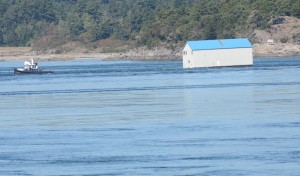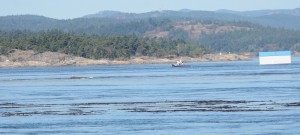Clear skies and light winds made for a beautiful day. The wind switched around in direction going from east northeast to southeast to west and back to easterlies. Solar radiation was high at 400 Langleys and barometric pressure rose for most of the day going over 1021 hPa mid-day before dropping in the late afternoon and evening. The forecast is for more of the same; sunshine and light easterly winds until Wednesday.
There were a lot of whale watching vessels in the area today and 16 visits by commercial operators were noted in the protected area. Except for a hectic time when killer whales were passing by, most operators were careful and slow. Again a couple of the largest vessels were travelling through shallow areas , close to haul-outs and lacking room for maneuverability: areas where they should not be travelling both for conservation and for safety. Two other whale-watching vessels were speeding in reserve, apparently anxious to get back out with the killer whales or back to base. The big noisy vessel that usually speeds in and out of the protected area was very well behaved today, nice change not speeding. Five ‘pleasure’ craft were observed in the protected area. Except for a fast entry by one boat, they were all travelling slowly and respectfully, including a Pedder Bay rental boat that did a nice drift through Middle Channel while the whale watching zoo was happening in the protected area.
I continue to spot the same branded California Sea Lions, left side brands 5477, 8101, 8228, 6153, 650U and rump brands U391, U105, U601, U321, U255, U148, U118, U174, U894, U239, U223 and more. There are others as well, all photo-documented, as are the Stellers Sea Lion brands. The Northern Elephant Seals left Great Race either early this morning or last night so just the sea lions were here today in the pinniped department. There was one Humpback Whale to the south of the protected area today and a Minke Whale about two miles west. Three Transient (Biggs) Killer Whales (one male, one female and one young) passed close to Rosedale Reef, just to the south of Race Rocks, heading west.
Routine chores were much more satisfactory today with a feeling of progress being made. There were no visitors.
- Overflight
- The smaller vessel in the foreground is in Middle Channel, the larger one went between West and Middle Rocks and between Turbine and North Rocks.
- Congestion in the no-go area.
- In a hurry to get through protected area.
- Some interesting vessel operations here today.
- An old male California Sea Lion 650U.

